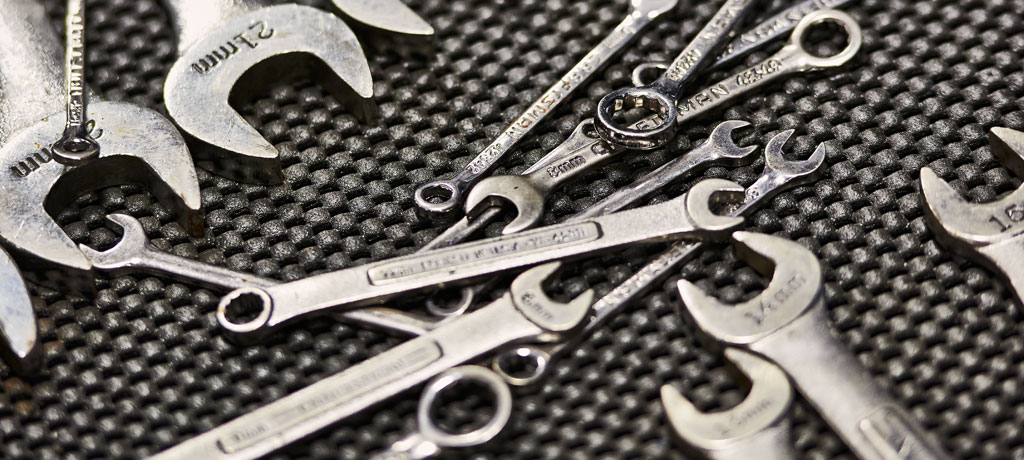
Power steering systems assist drivers in moving the wheels for a smooth, effortless turning feel. Without power steering, maneuvering vehicles around obstacles take a considerable amount of effort, especially at low speeds. Feedback from the power steering system allows drivers to properly gauge the driving surface and respond appropriately to changes in the roadway. Power steering has constantly evolved to keep up with technological advancements in common automotive builds. Although power steering started as a hydraulic system, it has slowly evolved into an electronic system today. Further advancements will continue to spur change as automobiles evolve.
Hydraulic
The hydraulic power steering system utilizes fluid moved by a pump controlled with a pulley. As drivers turn the steering wheel, a valve releases fluid into the system to turn the wheels. The speed of the valve opening coincides with the momentum of the vehicle to ensure the driver always receives the right amount of input from this system.
In older vehicles, the hydraulic system allows you to steer the car using the following parts:
- Rack and pinion
- Lines
- Pump
- Fluid reservoir
- Tie rod
- Steering arm
To keep the hydraulic components in good condition, drivers must learn how to check power steering fluid. Luckily, on the majority of vehicles with this type of steering system, the fluid check process only entails removal of the cap on the reservoir. The dipstick on the bottom of the cap clearly indicates the fluid level. Other vehicles may feature level indicator marks on the outside of the reservoir for quick checks by the owner. In order to diagnose leaks upon spotting fluid on the driveway, drivers must also learn what color is power steering fluid in their vehicle.
Hybrid
Unfortunately, just as drivers started to learn what is power steering and how does it work, manufacturers moved toward upgrading the system. After all, as vehicles moved toward the use of full electronic systems, it was vital that the power steering system received an upgrade that blended hydraulic and electric controls. Luckily, with the exception of the pump, the hybrid system works largely the same as the hydraulic components.
The main difference is that the pump utilizes an electric motor for power rather than using a pulley connected to the engine. The biggest benefit was that the power steering system could continue to run with the engine off to assist drivers maneuvering a stalled vehicle. The development of a hybrid system also paved the way for the creation of a fully electric steering system.
Electric
As vehicles moved toward full reliance on sensors to control and monitor various systems, development of a fully electronic power steering system seemed like a natural step forward. The electric power-assisted steering system continually watches the function of the gear and column to determine if the driver requires assistance. If the driver seems in need of help, the system applies a torque that turns the wheels a bit more to correct the vehicle’s trajectory.
On many vehicles, drivers can adjust the amount of input provided by the system by activating a button on the dash. Although the fully electronic system has a number of fail-safes built into the software, it retains a mechanical backup system as well. The mechanical system can activate if the car suddenly loses all power or if any of the control components fail.
The Future of Power Steering Technology
Vehicle manufacturers seem to be happy with mastering the question of, “How does power steering work,” on modern vehicles. Instead, attention has turned toward providing drivers with the ability to change the gear ratio in the steering box on the fly. Tightening or loosening up the steering can support drivers who would like to use their vehicle for a number of applications ranging from weekday commuting to weekend track-racing. Drivers will be able to select from a number of modes that link up with the stability control systems while altering the gear size and response times.
Manufacturers also want to focus on changing the way the system responds depending on the total steering angle of the vehicle. The steering angle and speed of the vehicle reveals an immense amount of information about the driver’s control level. Upon receiving an alarming combination of readouts, the vehicle’s electronic controls may alter the gearing of the steering box or activate the braking system to assist the driver in keeping the vehicle stable. Manufacturers hope these systems will help reduce collisions and other dangerous incidents to keep their drivers safe, no matter the road conditions.





